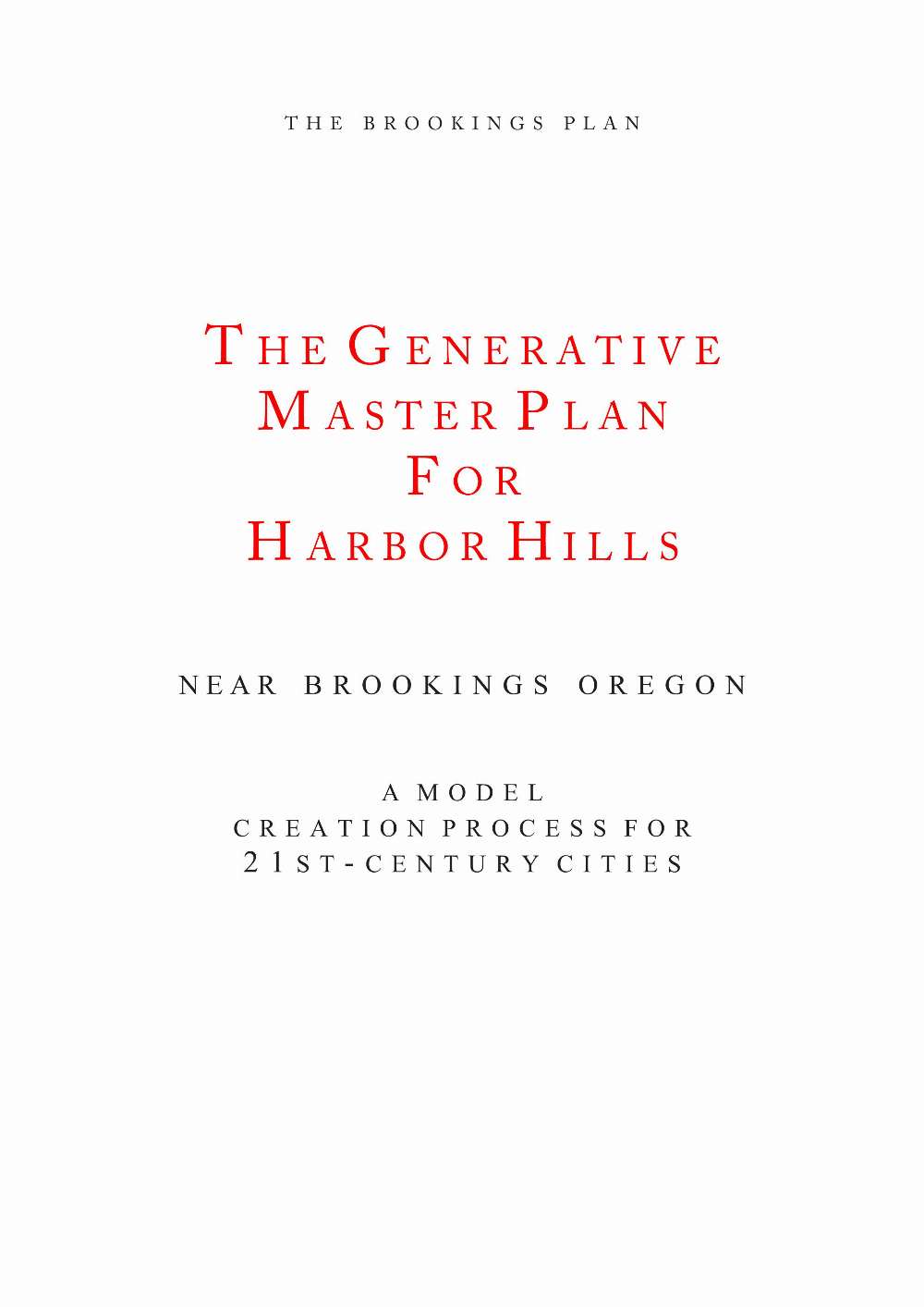
The Brookings Plan: The Generative Master Plan for Harbor Hills, near Brookings Oregon – A Model Creation Process for 21st century Cities
01/01/2005137-page draft report submitted jointly to the Commissioners of Curry County and to the City Council of Brookings, Oregon, as a Master Plan to provide information about philosophy, method and intent, in sufficient depth to satisfy the City and County and State officials regarding the entitlement of the land in Harbor Peak, and to provide a basis for that entitlement to be given. This plan, must therefore be regarded as illustrative, not definite. In Part 1 it deals with the Large Scale Structure, like Diagnosis of the land, Growth of larger Wholes, Density Distribution, Public Pedestrian Right of Way, Neighborhoods, House Lots and House Volumes, Roads, Paths and Parking, and in Part 2 it addresses the Small Scale Structure, like Types of Neighborhoods, House and Garden Layout Process, Positive Space, Trees and Fire and so on.
-
The Process of Urban Design and the Formation of Larger Urban Wholes
Theoretical basis and key assumptions for the process of urban growth, tested initially in the San Francisco Waterfront experimental project in 1979, in which the formation of larger urban wholes was highlighted as an overriding rule. This process was further ...
-
The Sequence of Unfolding - Generative Codes for the Design Process
In architecture, as in other things, the "right" sequence is of vital importance. It is a generative sequence of progressive differentiations, which allow space to unfold in the right order. Each differentiation acts on the product of the previous ...
-
Master Planning as a Dynamic Process - Organic Order and Piecemeal Growth
It is simply not possible to fix today, in a Master Plan, what the environment should be like in the future, and then to steer the piecemeal process of development toward that fixed, imaginary world. Instead, planning and construction will ...




 Go Back
Go Back